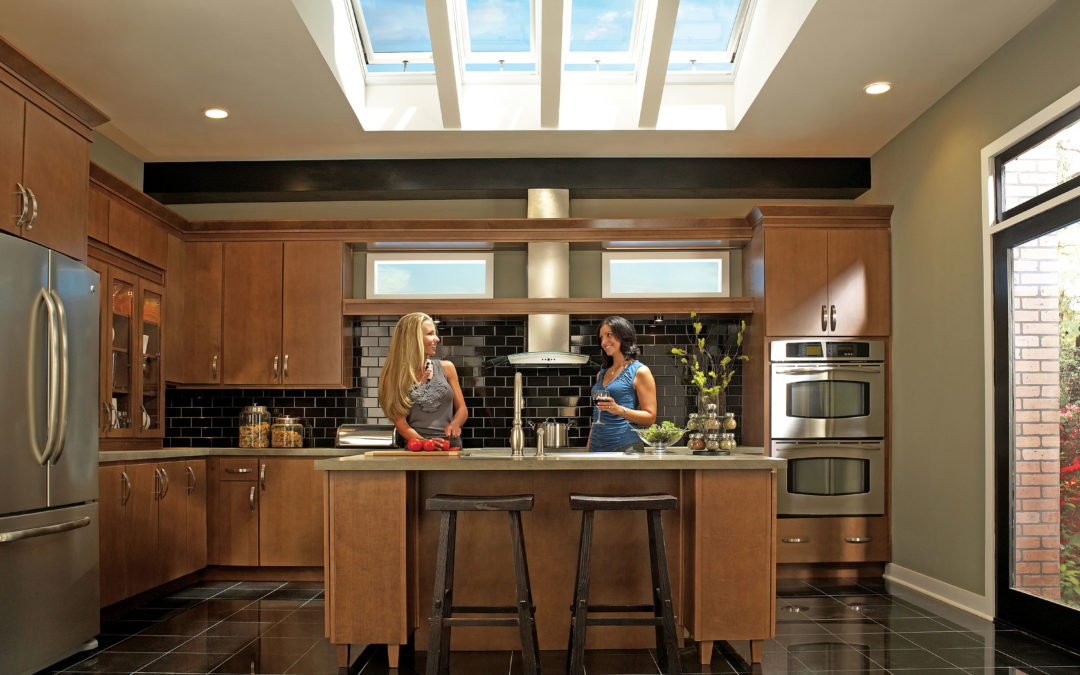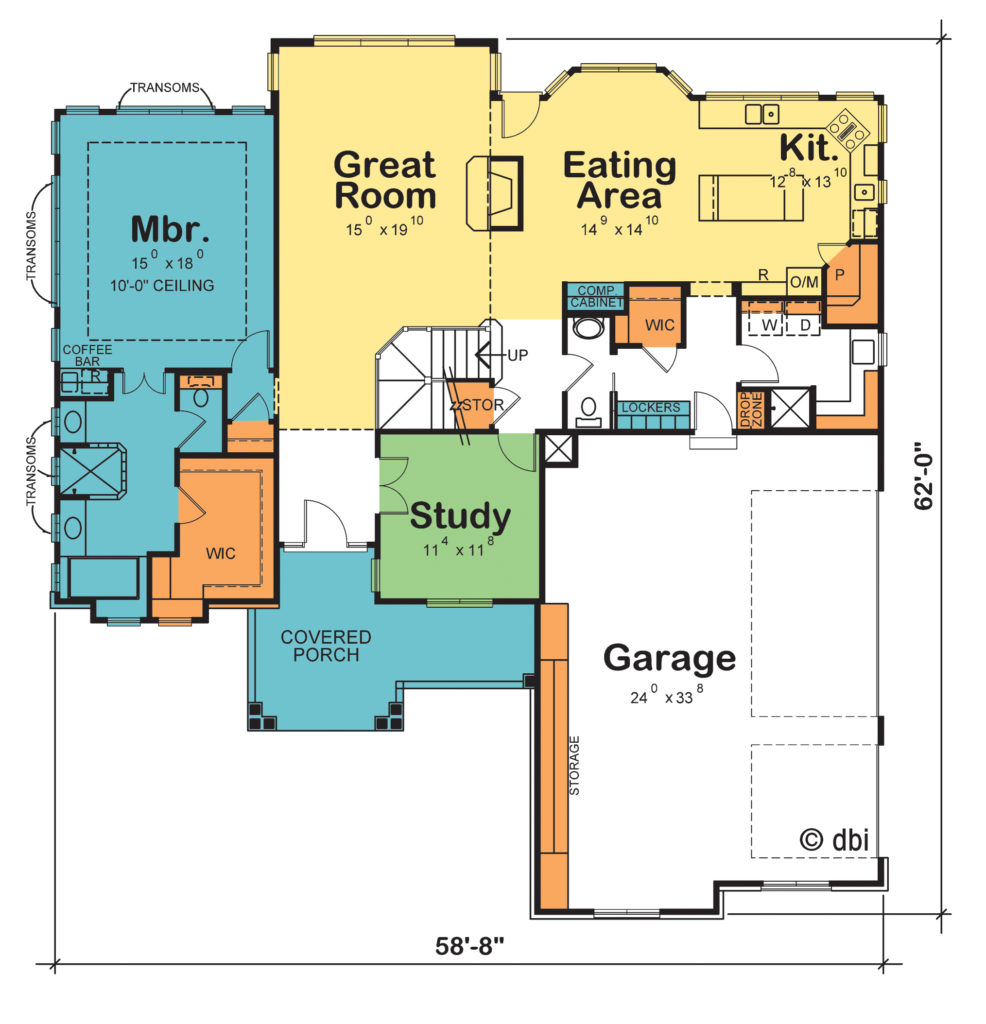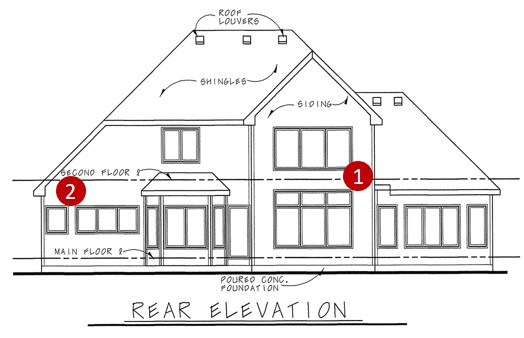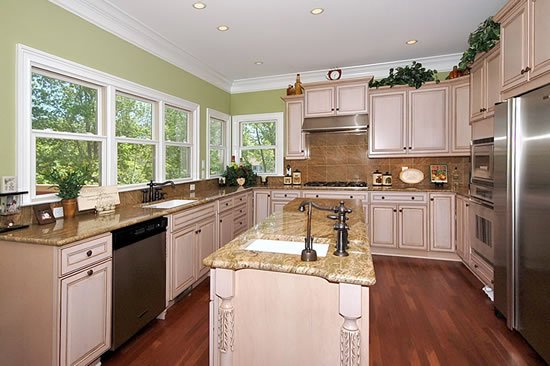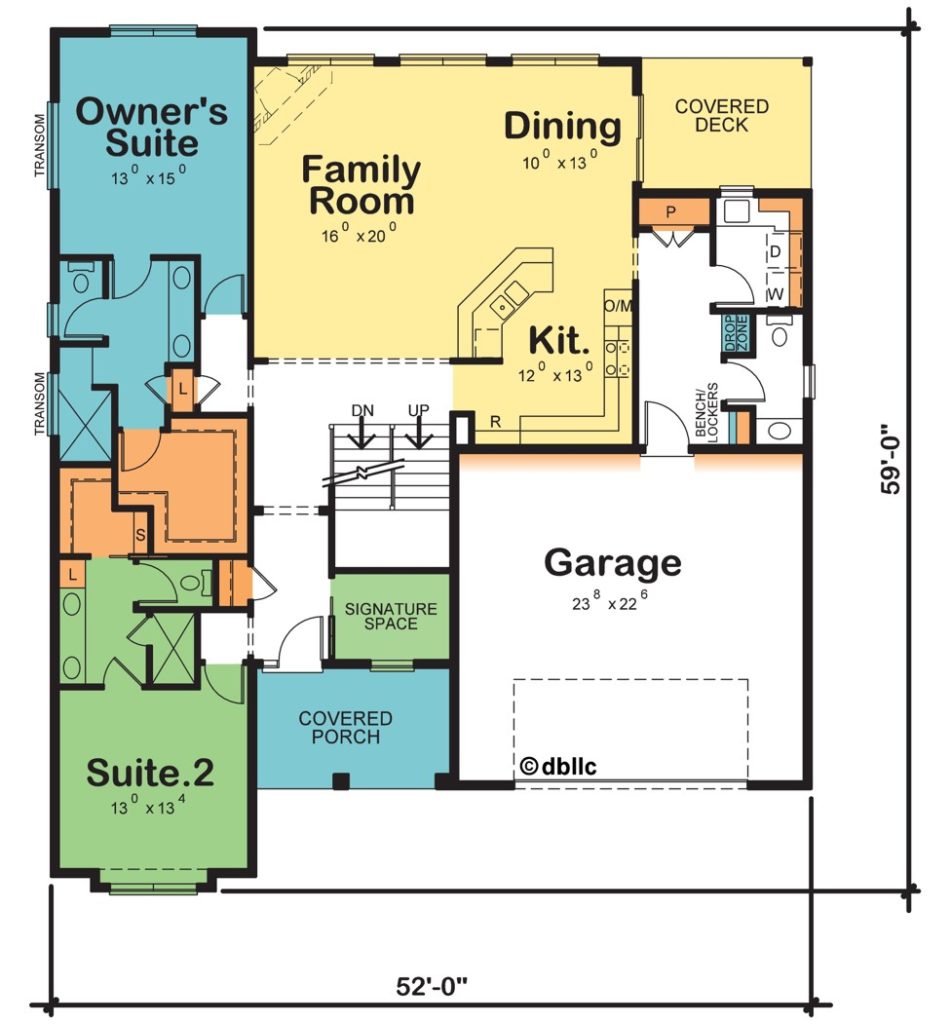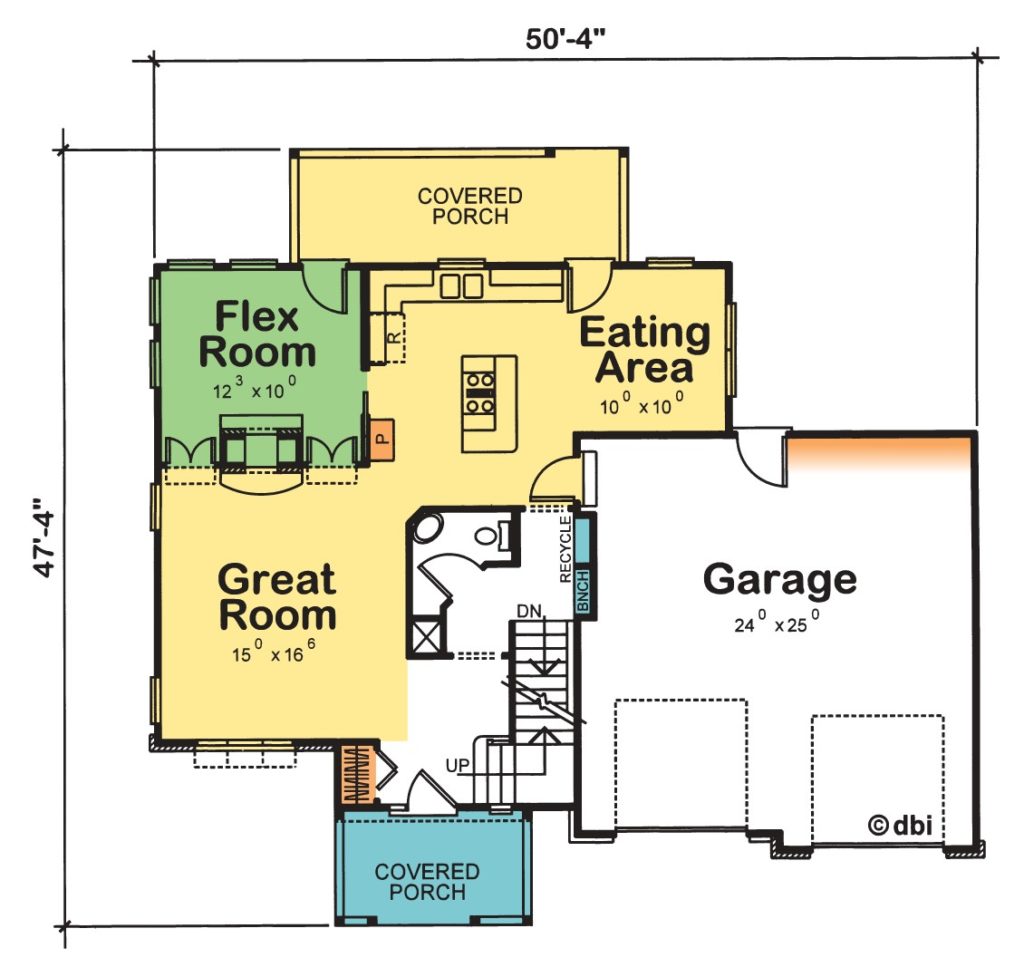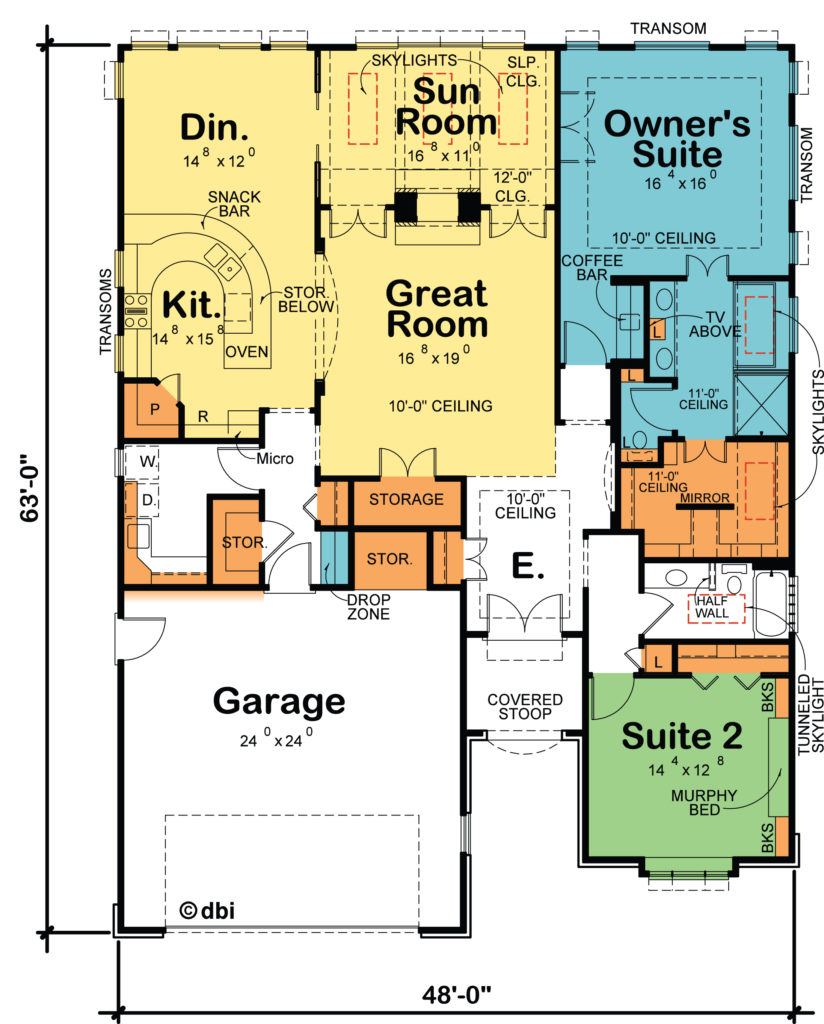Home designers know natural light is one of the most important elements of residential design. We are drawn to places in our homes that are bathed in natural light and oftentimes we don’t even realize it. But whether we’re having friends over or simply curling up with a good book, chances are we can be found in sunny spaces.
Physiologically, our eyes are attracted to light and studies show that sunlight triggers the release of serotonin in our bodies, a chemical that can improve our mood and also help calm us. Sunlight’s other health benefits are well documented – from Vitamin D production, lower blood pressure, and improved calcium absorption; to improved concentration, reduced irritability and headaches. Unfortunately, as we age, our eyes’ lenses yellow and harden, so less of the available light gets through. Rooms appear darker and less inviting. Everyday chores and even reading become more taxing.
In addition to the health benefits, abundant daylight dramatically affects our perception of color and size. Public areas in your home bathed in sunlight are perceived to be “welcoming” and “cheery.” They also appear larger than they actually are. It’s no surprise, then, when entertaining, people gravitate towards sunny spaces. Add in the obvious benefit of being able to easily and clearly see everything that sun-filled entertaining areas win almost every time. From the presentation of the food to the subtleties of your decorating, increased light levels in your dining area help make for memorable entertaining. Oversized windows, particularly out the back of the home can offer beautiful vistas. Placing windows on two, or sometimes three sides of your entertaining area, ushers in daylight from multiple directions.
- Natural light from three directions, including two sets of triple-wide windows out the back, illuminate the Silver Creek's (plan #42028 shown below) great room.
- When entertaining, people always seem to gather around the kitchen island. Rather than upper cabinets, there are additional windows out the back of this home's kitchen. Just be sure you've addressed that "lost" storage with, say, an oversized pantry!
Kitchens that enjoy high levels of sunlight are so pleasurable to be in. Additional solutions for adding daylight is to place awning windows or glass block between the backsplash and upper cabinets, high transom windows above the upper cabinets, and skylights over the kitchen area.
Consider also, windows as art. Not only are beautiful window shapes available, but the grouping of these windows can also be dramatic. Repeating arched windows… staggered thin vertical windows… delightful transoms… all speak to design aesthetics.
Wall art?
Transom windows are smaller and typically placed high in a wall allowing daylight and at the same time, privacy. In the Serena’s (plan #42282) rear suite bedroom, those transoms provide light while still allowing you to position your bed against that wall. And in the adjoining bathroom, transoms above the shower provide much-needed natural light.
Private spaces with more than adequate natural lighting feel “safe” and “serene,” one of the reasons for the popularity of bayed window sitting areas in bedroom suites. Daylight in the bathroom has a major effect on the color rendition of makeup. Electric lighting produces various color hues, many of which are not complimentary of skin tones. Then there are privacy concerns. A big window over the bathtub can usher in sunlight, but if it is covered over with window fashions for privacy, not much light is getting in. Glass block or privacy glass is a wise choice in bathrooms.
Other considerations.
Most interior doors in homes are left open. Therefore, placing windows directly opposite the door leading into a room elevate light levels in the hall or adjoining space leading into that room. Windows atop a staircase or at a staircase landing provide added light, making those stairs safer to transition.
Transom windows can also be used inside the home to further disseminate daylight. In the Gainsville (plan #6651), with windows on two sides of the great room and flex room, glass doors topped with transom windows share sunlight throughout these spaces.
Sometimes, the area you love for enjoying Mother Nature actually blocks much of the sunlight that otherwise would brighten your great room. Skylights to the rescue! Due to their angled orientation to the sun, skylights allow three times as much light as same size vertical window.
Skylights added to the Kauffman’s (plan #50012V) sunroom brighten the adjacent great room. With the added natural light afforded by skylights in the bathrooms, you may find no need for turning on the ‘electric’ lights. And with windows in closets still being rare, adding a skylight in the walk-in closet makes quick work of finding the item you’re looking for as well as discerning colors.
What more can you do if adding windows or skylights just aren’t an option? Window screens can reduce the amount of natural light passing through that screen by as much as 40%; however, there are some newer screen materials that block very little light. Strategically placed mirrors, particularly in bathrooms and dressing areas, can reflect sunlight, effectively doubling natural light levels. Even the paint you use matters, as lighter tints and glossier finishes reflect more light. Consider also where you work. Can you move your workspace closer to the windows? Just be cognizant of glare, particularly when at certain times of the day it might wash out your computer screen.
Whether public or private, areas in your home bathed in daylight are likely among your favorite places. Whether you relish moments alone for personal reflection or growth or life-giving time spent with loved ones, “light, bright, and airy” describes the perfect space. For so many reasons, high levels of natural light should be one of your top priorities when remodeling your existing home or building new. Be aware, building codes specify natural light levels, but understand these are minimums. Take the initiative and stress the importance of natural light levels when talking with your contractor or designer to eliminate future regrets.
For more resources on thoughtful design:
- Visit our blog
- Browse our Her Home™ Magazine
- Thoughtful Design Concepts
Cover photo courtesy of VELUX.
